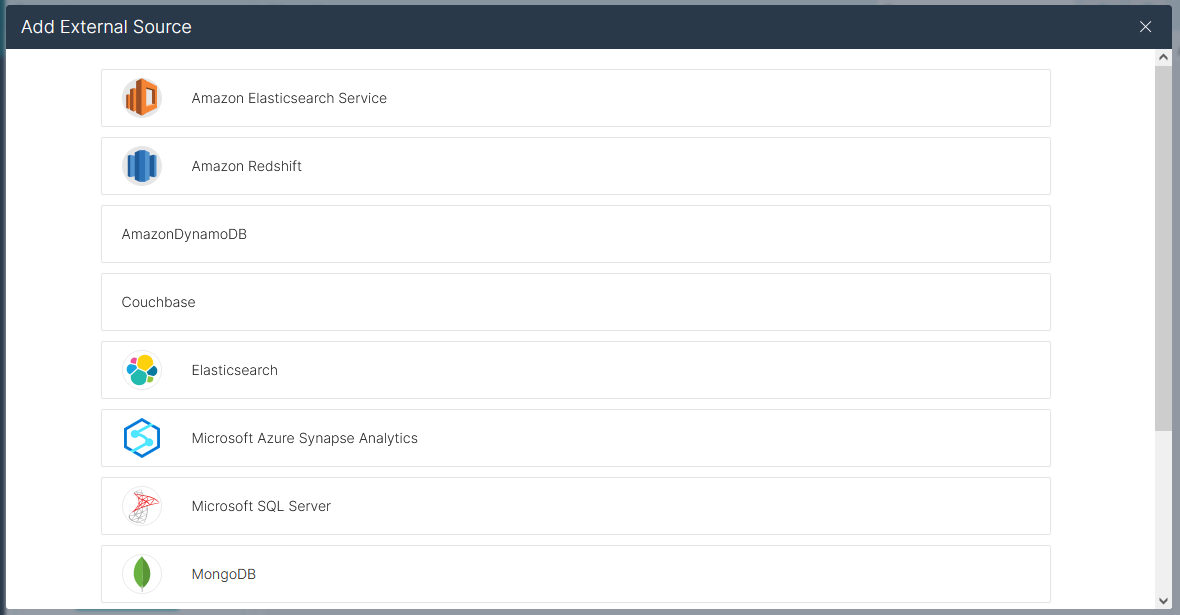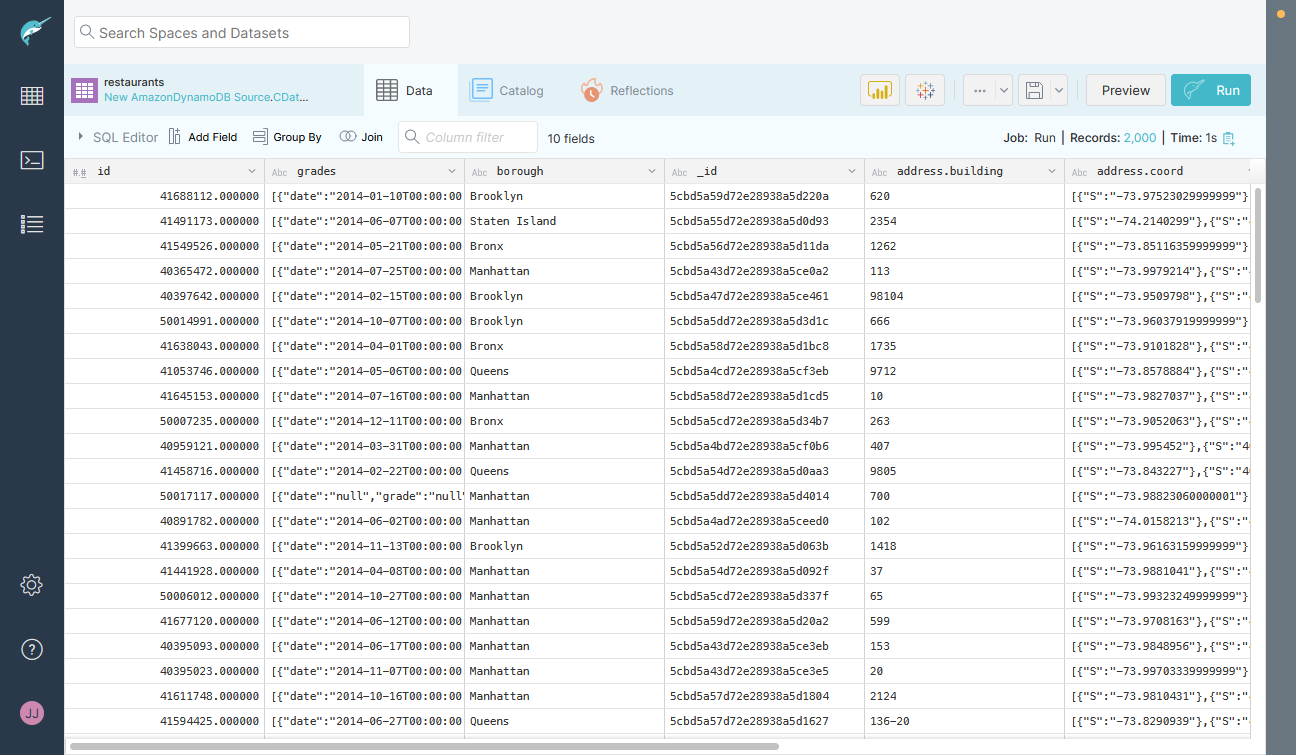Discover how a bimodal integration strategy can address the major data management challenges facing your organization today.
Get the Report →Connect to Cvent Data in as an External Source in Dremio
Use the CData JDBC Driver to connect to Cvent as an External Source in Dremio.
The CData JDBC Driver for Cvent implements JDBC Standards and allows various applications, including Dremio, to work with live Cvent data. Dremio is a data lakehouse platform designed to empower self-service, interactive analytics on the data lake. With the CData JDBC Driver, you can include live Cvent data as a part of your enterprise data lake. This article describes how to connect to Cvent data from Dremio as an External Source.
The CData JDBC Driver enables high-speed access to live Cvent data in Dremio. Once you install the driver, authenticate with Cvent and gain immediate access to Cvent data within your data lake. By surfacing Cvent data using native data types and handling complex filters, aggregations, & other operations automatically, the CData JDBC Driver grants seamless access to Cvent data.
Build the ARP Connector
To use the CData JDBC Driver in Dremio, you need to build an Advanced Relation Pushdown (ARP) Connector. You can view the source code for the Connector on GitHub or download the ZIP file (GitHub.com) directly. Once you copy or extract the files, run the following command from the root directory of the connector (the directory containing the pom.xml file) to build the connector.
mvn clean install
Once the JAR file for the connector is built (in the target directory), you are ready to copy the ARP connector and JDBC Driver to your Dremio instance.
Installing the Connector and JDBC Driver
Install the ARP Connector to %DREMIO_HOME%/jars/ and the JDBC Driver for Cvent to %DREMIO_HOME%/jars/3rdparty. You can use commands similar to the following:
ARP Connector
docker cp PATH\TO\dremio-cvent-plugin-20.0.0.jar dremio_image_name:/opt/dremio/jars/
JDBC Driver for Cvent
docker cp PATH\TO\cdata.jdbc.cvent.jar dremio_image_name:/opt/dremio/jars/3rdparty/
Connecting to Cvent
Cvent will now appear as an External Source option in Dremio. The ARP Connector built uses a JDBC URL to connect to Cvent data. The JDBC Driver has a built-in connection string designer that you can use (see below).

Built-in Connection String Designer
For assistance in constructing the JDBC URL, use the connection string designer built into the Cvent JDBC Driver. Double-click the JAR file or execute the jar file from the command line.
java -jar cdata.jdbc.cvent.jar
Fill in the connection properties and copy the connection string to the clipboard.
Before you can authenticate to Cvent, you must create a workspace and an OAuth application.
Creating a Workspace
To create a workspace:
- Sign into Cvent and navigate to App Switcher (the blue button in the upper right corner of the page) >> Admin.
- In the Admin menu, navigate to Integrations >> REST API.
- A new tab launches for Developer Management. Click on Manage API Access in the new tab.
- Create a Workspace and name it. Select the scopes you would like your developers to have access to. Scopes control what data domains the developer can access.
- Choose All to allow developers to choose any scope, and any future scopes added to the REST API.
- Choose Custom to limit the scopes developers can choose for their OAuth apps to selected scopes. To access all tables exposed by the driver, you need to set the following scopes:
event/attendees:read event/attendees:write event/contacts:read event/contacts:write event/custom-fields:read event/custom-fields:write event/events:read event/events:write event/sessions:delete event/sessions:read event/sessions:write event/speakers:delete event/speakers:read event/speakers:write budget/budget-items:read budget/budget-items:write exhibitor/exhibitors:read exhibitor/exhibitors:write survey/surveys:read survey/surveys:write
Creating an OAuth Application
After you have set up a Workspace and invited them, developers can sign up and create a custom OAuth app. See the Creating a Custom OAuth Application section in the Help documentation for more information.
Connecting to Cvent
After creating an OAuth application, set the following connection properties to connect to Cvent:
- InitiateOAuth: GETANDREFRESH. Used to automatically get and refresh the OAuthAccessToken.
- OAuthClientId: The Client ID associated with the OAuth application. You can find this on the Applications page in the Cvent Developer Portal.
- OAuthClientSecret: The Client secret associated with the OAuth application. You can find this on the Applications page in the Cvent Developer Portal.

NOTE: To use the JDBC Driver in Dremio, you will need a license (full or trial) and a Runtime Key (RTK). For more information on obtaining this license (or a trial), contact our sales team.
Add the Runtime Key (RTK) to the JDBC URL. You will end up with a JDBC URL similar to the following:
jdbc:cvent:RTK=5246...;OAuthClientId=MyOAuthClientId;OAuthClientSecret=MyOAuthClientSecret;InitiateOAuth=GETANDREFRESH
Access Cvent as an External Source
To add Cvent as an External Source, click to add a new source and select Cvent. Copy the JDBC URL and paste it into the New Cvent Source wizard.

Save the connection and you are ready to query live Cvent data in Dremio, easily incorporating Cvent data into your data lake.

More Information & Free Trial
Using the CData JDBC Driver for Cvent in Dremio, you can incorporate live Cvent data into your data lake. Check out our CData JDBC Driver for Cvent page for more information about connecting to Cvent. Download a free, 30 day trial of the CData JDBC Driver for Cvent and get started today.





